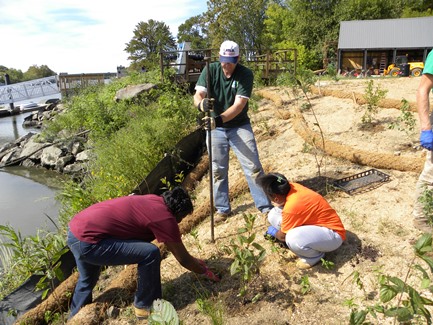The DNREC Division of Waste and Hazardous Substances sets standards for risk assessment and cleanup and remediation planning for contaminated sites. Cleanup and remediation are governed under the Delaware Hazardous Substance Cleanup Act, known as HSCA (7 Del. C. Ch.91). The HSCA Human Health Risk Assessment Guidance applies only to sites within the HSCA program and does not apply to sites outside of the HSCA program. Please get approval from the regulating section prior to applying the HSCA Human Health Risk Guidance to sites outside of the HSCA program.

The HSCA Human Health Risk Assessment Guidance describes the use of HSCA Screening Levels to perform an Initial Assessment of Phase II, or Facility Evaluation, analytical data. The HSCA Screening Levels also play a role in the baseline risk assessment following a Remedial Investigation.
The HSCA Screening Levels are conservatively based on residential land use and background values at uncontaminated sites. The ecological component of the HSCA Screening Levels is primarily based on screening values determined as part of the Delaware Surface Water Quality Standards, and on work by the US EPA and the National Oceanic and Atmospheric Administration (NOAA).
The Hazardous Substance Cleanup Act requires that cleanup standards be based on site specific risks. Therefore, the cleanup standards for a site may be higher or lower than the HSCA Screening Levels.
In an Initial Assessment, the maximum observed concentrations of chemical analytes present at the subject site are compared to the HSCA Screening Levels. Potential outcomes include a determination that no further action is necessary regardless of future use of the site, a determination that no further action is necessary if specific conditions are met, or a requirement for a more comprehensive study of the site.
The purpose of the more comprehensive study, usually called a Remedial Investigation, is to determine the extent and nature of contamination and to provide analytical data needed to perform a baseline human health risk assessment.
The Guidance emphasizes the importance of planning for the risk assessment along with the Remedial Investigation Sampling and Analysis Plan (SAP). The written scope of the risk assessment shall be included as part of the Conceptual Site Model (CSM), and should address exposure units, exposure pathways, receptors, exposure factors, data needs and any software to be used in risk calculations, or fate and transport models. The CSM and SAP are specific to the site and are subject to DNREC approval.
Inorganic compounds level tables for use with ProUCL
Note: These are EXCEL files. Use right-click/save-as to download.
To determine the exposure point concentration, the Department recommends the use of EPA’s statistical software program Pro UCL.
For the human health risk calculation, the Department recommends the risk calculator available through the Delaware Risk Assessment Calculator (DE RAC). Other risk calculators are subject to prior approval by the Department.
The Guidance includes a set of standardized tables for use in the risk assessment report. The tables are designed to complement the RAIS risk calculator output and provide a complete record of the variables used in the risk assessment. The Guidance also prescribes a format for the risk assessment report.
Screening is performed for all sites for potential ecological concern. The Guidance for Screening Level Ecological Risk Assessments Under HSCA provides direction and information for conducting a tiered Screening Level Ecological Risk Assessment (SLERA) at all DNREC HSCA and/or Resource Conservation and Recovery Act (RCRA) sites. A SLERA is the first part of an Ecological Risk Assessment (ERA) at a known or suspected contaminated site.
If the answer to any of the four questions is “yes,” the sampling results should be compared to the HSCA Screening Levels for ecological sediment, surface water, and surface soil, as applicable.
Please contact the DNREC Remediation Section if any sampling results exceed the HSCA Screening levels to discuss possible additional evaluation of ecological risk.
Quantitative cleanup goals shall be based on cumulative carcinogenic and non-carcinogenic risks of 1E-5 or a hazard index of one (1) respectively, except for lead. Cleanup goals shall also consider impacts to the environment and ecological effects.
HSCA Human Health Risk Assessment Guidance
EPA Pro UCL Statistical Analysis Software
Risk Assessment Information System (RAIS)
HSCA Screening Levels
– Sortable Screening Level Table
Interstate Technology and Regulatory Council Ecological Screening Approach
EPA Risk Assessment Information
Soil Background Studies
Statewide Soil Background Study: Report of Findings (DNREC, 2012)
Related Topics: cleanup, HSCA, remediation, waste and hazardous substances